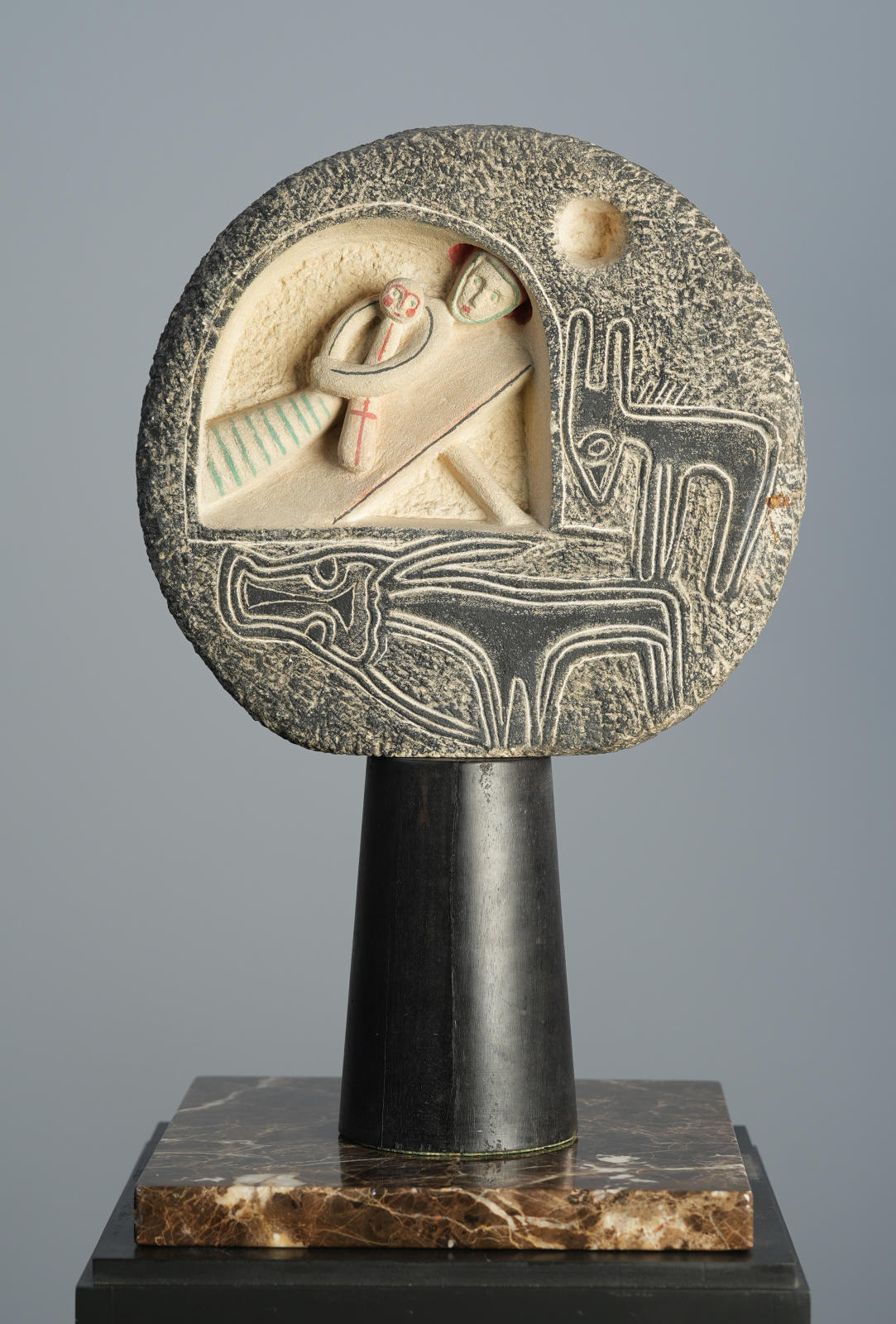artist
Beginning in 1930 Jean Lambert-Rucki, a Polish avant-garde artist, sculptor, and graphic designer became one of the pioneers of Modern Religious Art. Over the course of his career Lambert-Rucki worked in a number of different styles including Cubism, the Tribal Arts of Africa, and Primitivism.
Description
Jean Lambert-Rucki was a prominent French sculptor known for innovative and symbolic works in sculpture spanning the early 20th century and reflecting the tumultuous times he lived through, including both World Wars. His sculptures are rich in symbolism, drawing from a variety of sources and artistic movements.
Often highly abstract, Lambert-Ruci’s sculptures frequently included representations of the human figure that referenced mythological or biblical themes. That, along with his association with the Cubist movement, are combined here in our Nativity from 1949. Circular in form and asymmetrically carved, focus is placed on the figures of mother and child who reside in an interior, light filled space. Treated in bas relief with highlights of color, they stand apart from the flatter representations of the animals that inhabit the surrounding night.
In the context of the turbulent times in which Lambert-Rucki lived his sculptures of mother and child can be seen as symbols of hope and resilience. Beyond the biblical story, here in Nativity they represent the enduring strength of the human spirit and the promise of a better future, even in the face of adversity and hardship. On the verso of this work, Lambert-Rucki carved a variation of a Christogram with Alpha and Omega symbols. This monogram forms the abbreviation for the name Jesus Christ while the Alpha and Omega are the first and last letters in the Greek alphabet. Together the artist may have been signifying Christ’s eternal and divine nature – a powerful visual representation of God’s divinity and Christ’s eternal existence.
provenance
Christies, NY 2005




































